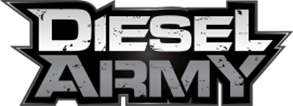One of the most alluring aspects of diesel truck ownership to enthusiasts is the ability to make big horsepower relatively easily. While it may seem like an insignificant upgrade at first blush, there are potentially big gains to be had from upgrading the hot-side charge air pipe (also known as a boost-tube or intercooler pipe.) And this holds especially true on modern trucks like our 2015 Chevy Silverado 2500HD with its LML Duramax diesel engine.
What is the Hot-Side Charge Air Pipe?
The hot-side intercooler pipe carries compressed, high-temperature air from the turbocharger to the intercooler, where the air is cooled before entering the engine. This pipe is under constant stress from high temperatures and boost pressures—especially when towing, hauling, or running performance tunes.
What Are The Benefits Of An Aftermarket Hot-Side Pipe?
When you swap out your factory hot-side pipe for an aftermarket one, you’re doing more than just changing a piece of tubing, you’re addressing some of the biggest weak points in the factory charge-air system. One of the biggest gains is reliability. The stock pipe, especially with crimped ends or plastic construction, is prone to cracking from heat cycling or failing under heavy boost. Aftermarket options, built from high-quality aluminum or steel with welded or bead-rolled ends, are purpose-built to handle high boost pressure. This makes them a solid choice for tuned or hard-working trucks.
Boost retention is another area where these aftermarket parts shine. Stock pipes often rely on basic couplers and clamps that can leak (or even burst) over time, especially as the rubber degrades. High-quality kits, such as this from Pusher, include multi-ply silicone couplers and heavy-duty T-bolt clamps that keep everything sealed.
You might also notice a sharper, more responsive feel from the turbo. Many upgraded pipes use smoother internal surfaces and larger diameters, which let air move more efficiently. This can help your turbo spool faster, translating to quicker throttle response and stronger acceleration—something you’ll really appreciate when towing, hauling, or simply merging into traffic.
Finally, if you’ve done, or plan to do, other performance upgrades like a tuner, bigger turbo, or aftermarket intercooler, a stronger hot-side pipe isn’t just a nice addition, it’s a necessity. It ensures your engine gets a steady, unrestricted supply of pressurized air even under extreme conditions, making it a foundation piece for reliable, long-term performance.
The Pusher Max Hot-Side Charge Air Tube
While there are several options for aftermarket Duramax charge tubes, one of our favorites is from the air-handling-experts at Pusher. The Pusher Max driver-side charge air tube is constructed of mandrel-bent 3-inch tubing. The increased diameter and smoother bends, along with a 10-percent shorter routing, deliver an incredible 86.4-percent increase in airflow when compared to the factory unit it replaces. Pusher’s design also eliminates the problematic factory GM couplers and replaces them with heavy-duty 5-ply silicon couplers and burly stainless-steel T-bolt clamps. Pusher offers the charge tube in seven different colors, including the Titanium we opted for, or as an uncoated unit.
Included in the box are Pusher’s 3-inch Max driver-side charge tube, a 3-inch straight 5-ply silicon boot, a 3-inch to 2.25-inch boot, and a trio of 3-inch stainless-steel T-bolt clamps.
Costing less than $300 at the time of writing this, the Pusher Max charge tube is an incredibly value as well.
Installing The Pusher Max Hot-Side Charge Air Tube
Pusher is a small, family-owned business located in southeastern Florida. The company designs all its part in-house and they are always manufactured in the United States. This ensures that both quality and support are always top-notch. Ordering the charge air tube was simple and we had it landed in our driveway in a matter of days.
Look, we know everyone is a semi-professional shade-tree mechanic. And replacing an intercooler pipe on a Duramax is not a big ask. However, you will save yourself a lot of heartache and grief by fully reading and following the instructions that Pusher sends with its hot-side intercooler pipe. We too are those knuckleheads that think we can do without guidance. Trust us, it’s worth following the directions.
The install starts by removing the plastic inner fender liner on the driver side of the truck. This will allow unfettered access to the lower intercooler inlet.
Next, loosen the factory lower T-bolt clamp and carefully remove the charge pipe from the intercooler inlet. Note that the factory charge pipe is a two-piece unit and that the center boot does not need to be removed.
With the charge pipe removed from the lower intercooler outlet, the next step is to loosen the T-bolt attaching the charge pipe to the turbocharger outlet. Once loosened, the factory charge pipe can be wiggled up and out of the engine bay.
Pictured next to the factory charge pipe, the Pusher Max 3-inch hot-side charge pipe is constructed of mandrel-bent tubing that offers a 10-percent shorter routing than the factory piece. It is precision designed to avoid contact with the surrounding engine bay components. Pusher claims an 86.4-percent increase in airflow compared to the factory piece.
Included with the kit is a 2.25 to 3.0-inch coupler. This gets installed on the turbocharger outlet prior to installing the charge pipe. It is important to ensure that the coupler is seated behind the bead on the turbo outlet while also maintaining enough overhang for the charge tube to insert into.
Learn from our mistakes. After installing the turbo outlet coupler you’ll want to install the intercooler inlet coupler. Instead of following the instructions we clamped the boots onto the charge pipe first, which led to much confusion and delay.
The Pusher charge tube gets installed from the top side of the engine bay. We very carefully snaked and wiggled the tube past every sharp bolt and manifold casting destined to scratch our beautiful powder coating.
Once the charge tube is properly seated in both couplers it’s important to ensure that the inlet leg at the turbocharger is level. Once this is verified, the new T-bolt clamp at the turbocharger can be tightened followed by the clamps on the intercooler. It’s also important to not overtighten these bolts. Pusher says the T-bolt torque specs are 50 in-lbs on factory tuned vehicles and 75 in-lbs on tuned vehicles with an upgraded turbo. It’s advised to not use a drill or impact, either.
Why Only The Hot-Side Pipe?
We get this question frequently and the answer is one that LML Duramax owners know all too well. Many of the available aftermarket cold side charge pipes, including those from Pusher, require that the factory CP4.2 high-pressure injection pump be swapped for the smaller Bosch CP3 unit. This is no small feat and requires a full fuel system upgrade that carries with it an often five-figure price tag. That said, there are a few kits on the market that will work with the factory LML fuel system, however, they come with their own challenges. Additionally, it’s universally accepted that the largest gains come from the hot side charge pipe (better than 80-percent increase in airflow) whereas the cold side offers lesser improvements (about 20-percent).
Is The Pusher Max Hot-Side Charge Air Tube Worth The Effort?
The bottom line is this: Installing a new hot-side charge air tube isn’t going to result in measurable horsepower gains. This is a supporting modification that has bit implications for those who have already, or plan to, modified their truck. However, it’s not for nothing. With the Pusher hot-side charge air pipe installed we noticed an immediate change in how the truck accelerated. Power delivery is smoother, and turbo lag feels noticeably reduced. There’s also a bit a bit more of that glorious turbo whistle that Duramax diesels are known for.































